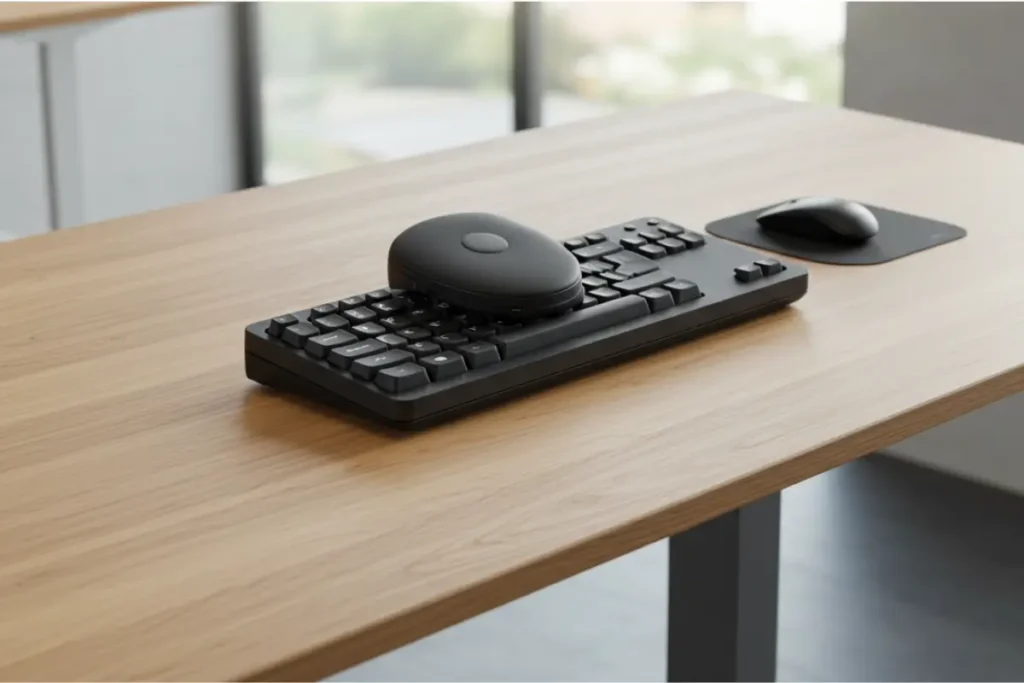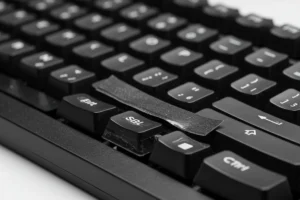Imagine combining two amazing tools that transform the way we work and play: standing desks and keyboards. I’ve explored both deeply and in this article, I’m going to share everything you need to know about matching them perfectly.
This post is going to open your eyes to a world of comfort, health, and productivity.

Why Standing Desks and Keyboards Are the Ultimate Duo
Standing desks aren’t just a trend—they’ve become essential for anyone serious about staying healthy while working. But pairing the wrong keyboard with your standing setup can actually backfire.
That’s why understanding how to match your desk with the right keyboard is so important.
I’ve personally experienced how a mechanical keyboard placed at the wrong height on a standing desk can cause discomfort. That’s why I always emphasize the need to adjust not just the desk but also the peripherals.
Your keyboard should be at a height that allows your elbows to rest at a 90-degree angle, minimizing wrist strain.
From my own setup, I’ve noticed that when I stand, I prefer a low-profile keyboard with a slight negative tilt. This reduces the need to bend my wrists upward, which can lead to carpal tunnel over time.
So yes, it’s not just about standing—it’s about standing smart!
If you’re just getting started with this combo, make sure you also consider anti-fatigue mats, monitor stands, and cable management solutions. These add-ons might seem minor, but they elevate the whole experience.
Want to dive deeper into how keyboards influence productivity? I recommend this great read from our blog: The Influence of Keyboards on Productivity: Myth or Reality.
Features to Look for in a Keyboard for Standing Desks
Not every keyboard plays well with a standing desk. There are some specific features I always look for when recommending or testing keyboards for this setup.
✅ Ergonomic Design
Ergonomics should be at the top of your list. Look for a split keyboard or one with a tenting option. This allows your arms and wrists to remain in a natural position. One of my favorites is a low-profile mechanical keyboard with adjustable legs.
✅ Wireless Capability
Standing desks often move up and down, so the last thing you want is tangled cables. Wireless keyboards offer cleaner setups and more freedom. Just make sure there’s minimal input lag—especially if you game like I do.
✅ Compact Form Factor
A tenkeyless (TKL) or 60% layout saves space, giving you more room for mouse movement and better posture. It also helps center your hands with the monitor, reducing neck strain.
✅ Durable Build Quality
When you’re using a standing desk, you tend to type with a bit more force—trust me, I’ve broken keycaps before. So PBT keycaps and solid switch housings go a long way.
For more awesome compact keyboards, check out this article: 10 Compact Keyboards for Minimalist Setups.

Best Keyboard and Standing Desk Pairings (Tested and Loved)
Now let me share some of the best combos I’ve tested and absolutely loved. These pairings aren’t random—they’re optimized for different user profiles, from hardcore gamers to laid-back writers.
🧠 Writers and Content Creators
- Desk: Uplift V2
- Keyboard: Keychron K3 (Low-profile, tactile, wireless)
- Why: You get quiet tactile switches for long hours of writing without fatigue, and a sturdy desk with memory presets.
🎮 Gamers
- Desk: Flexispot E7 Pro
- Keyboard: HyperX Alloy Origins Core
- Why: This combo offers fast response time and a solid build to handle intense gaming sessions while standing.
👨💻 Coders
- Desk: Autonomous SmartDesk Pro
- Keyboard: Logitech Ergo K860
- Why: A split keyboard with tenting and the desk’s height memory settings give maximum comfort for hours of coding.
🎨 Designers
- Desk: Fully Jarvis Bamboo
- Keyboard: Logitech MX Keys Mini
- Why: Aesthetic, smooth keypresses, and ultra-silent typing. Perfect for collaborative environments or design studios.
If you’re still unsure about choosing a keyboard, this article will help you out: How to Choose the Best Keyboard for Your Needs: Work, Gaming or Productivity.

Tips for Proper Ergonomics with Standing Desk + Keyboard
Even the best setup can harm you if used incorrectly. Here are some practical tips I always apply and suggest to others:
- Use a wrist rest only when standing if your keyboard is raised.
- Keep the keyboard flat or negatively tilted to maintain a neutral wrist posture.
- Don’t forget to move—alternate between sitting and standing every 30–45 minutes.
- Use a monitor stand or arm so your screen stays eye-level, reducing neck strain.
If you’re interested in ergonomics, don’t miss this post: How Ergonomic Keyboards Can Prevent Wrist Pain.
See More
- How to Make Your Keyboard Quieter Without Replacing It
- The Most Annoying Keyboard Issues and How to Fix Them
- The Best Keyboards for Retro PC Builds
Final Thoughts 🌟
I truly believe that standing desks paired with the right keyboards can change the way we work and even how we feel at the end of the day.
Since I started using this combo, I’ve had less back pain, better focus, and even more motivation to get things done. It’s not about trends—it’s about feeling good while staying productive.
💬 If you enjoyed this article, don’t forget to leave a comment and share it with your friends! Your feedback means the world and helps the blog grow stronger every day.
👉 Also, check out more articles on Keyboards Technology and discover a world where technology meets comfort, style, and fun.
🧠 If in doubt or curious for more advanced ergonomic techniques, I suggest this detailed external resource from the Harvard Health Blog.
Thanks for reading and until next time—type smart and stand proud!


